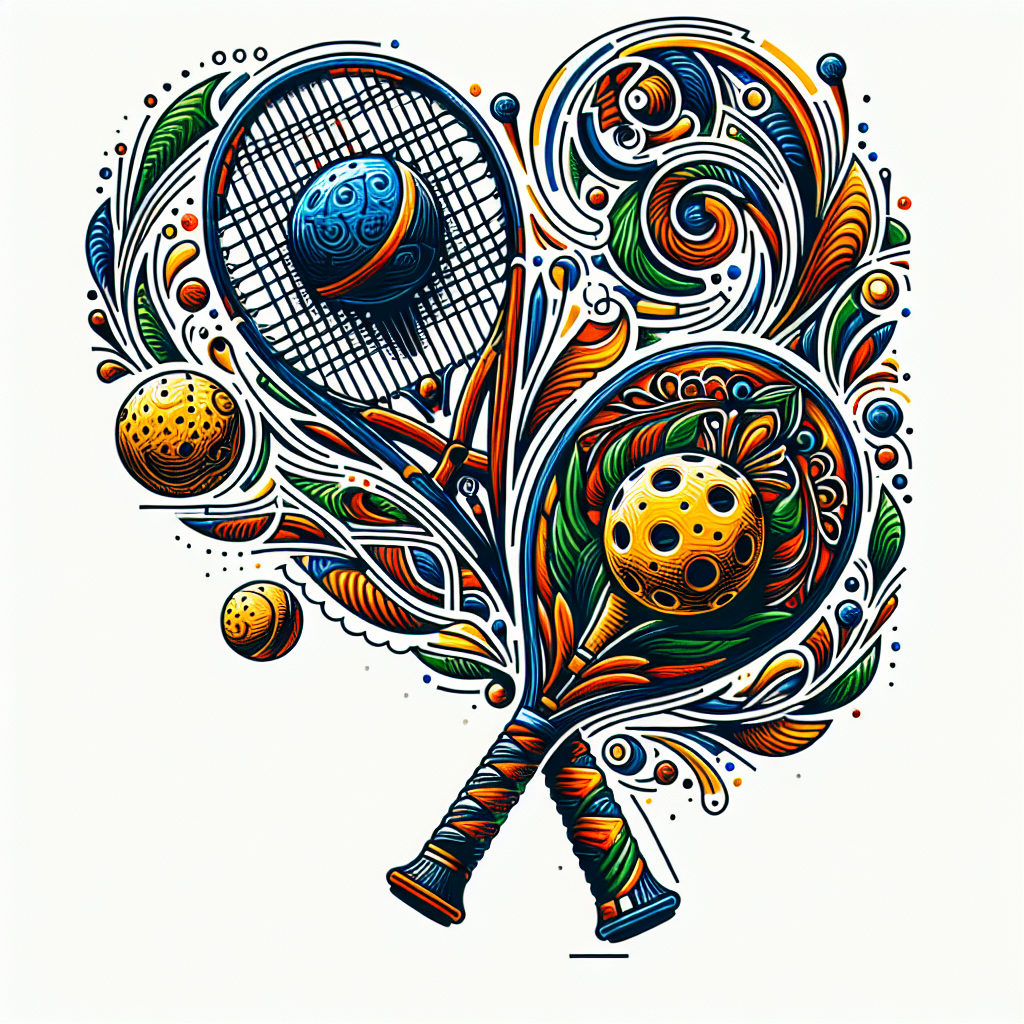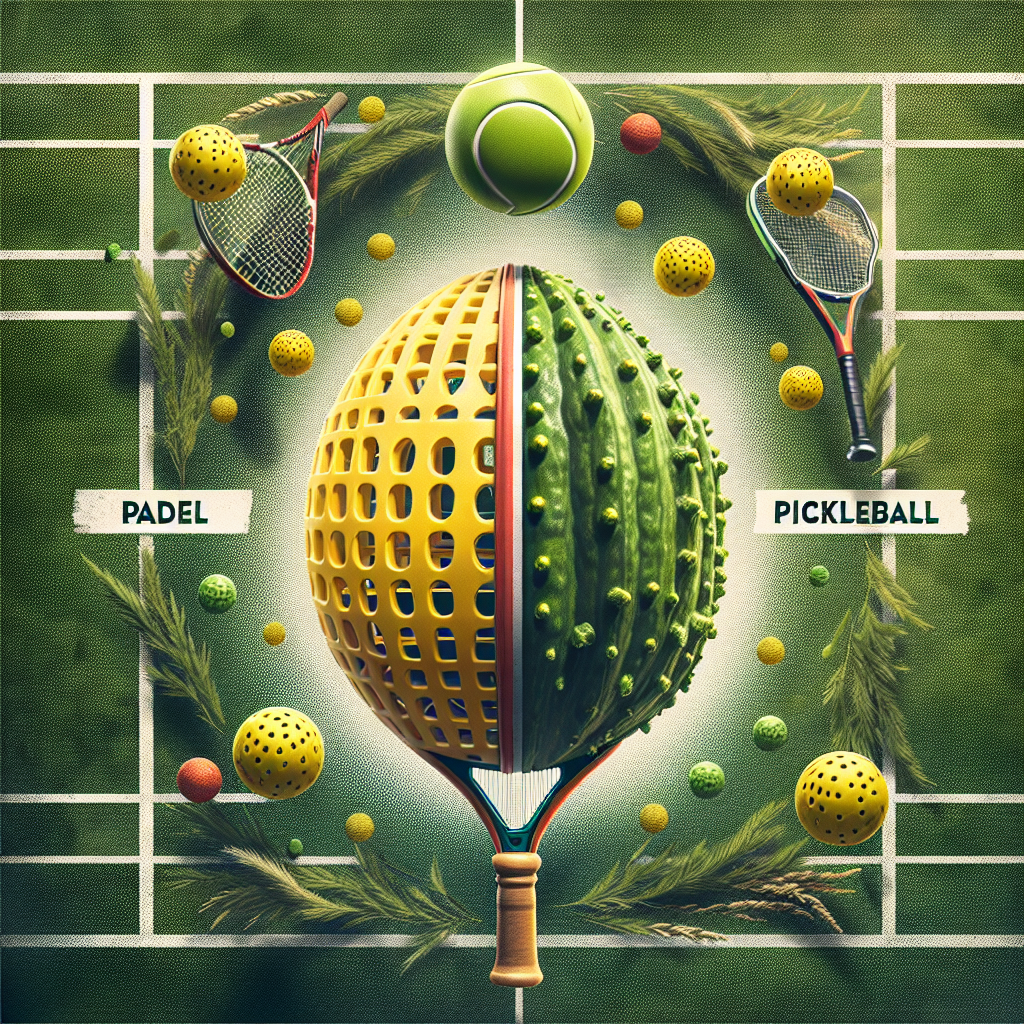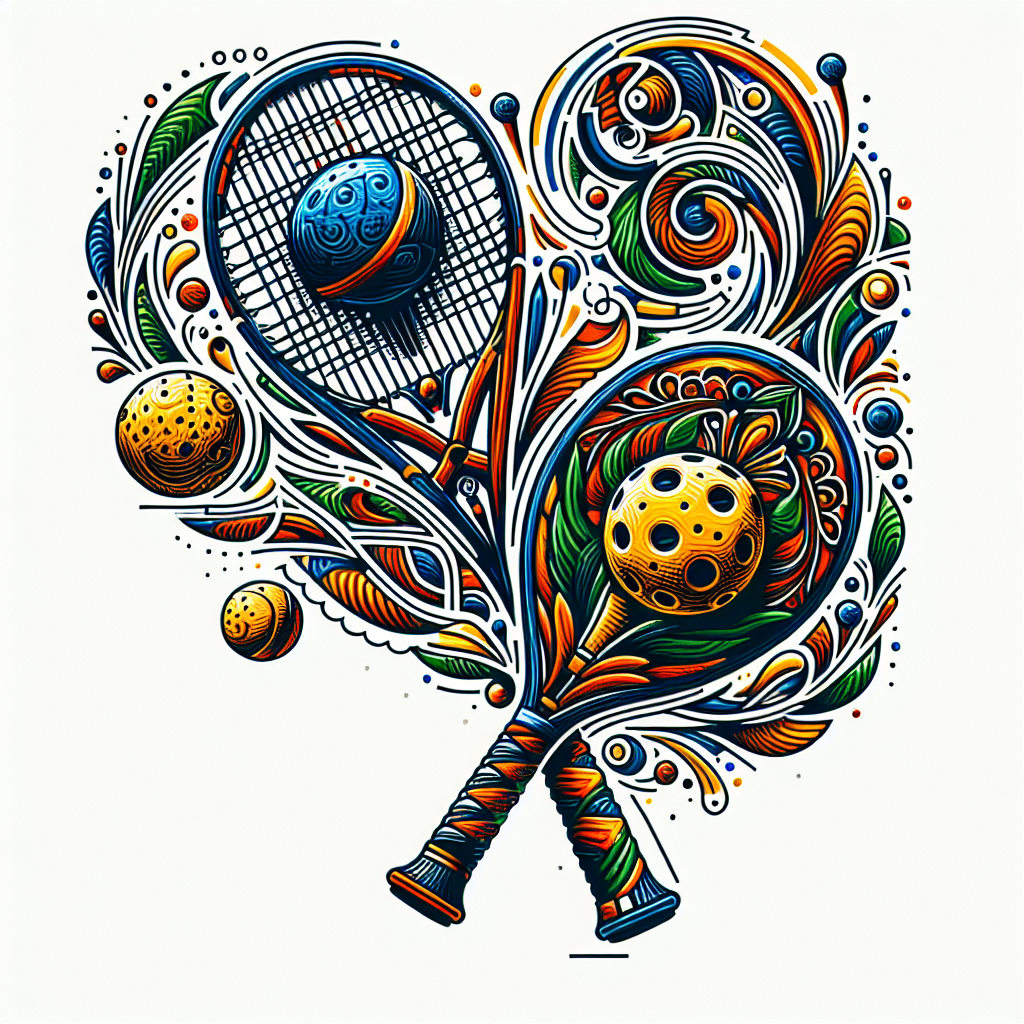Have you ever wondered if Padel and Pickleball are the same? Well, let’s clear up the confusion. Padel and Pickleball may seem similar at first glance, but they are actually two different sports. While both involve a racquet and a ball, there are key differences in their rules, equipment, and playing surfaces. So, if you’re curious to learn more about these two popular racquet sports and how they differ from each other, let’s explore the exciting world of Padel and Pickleball together!
Overview of Padel and Pickleball
What is Padel?
Padel is a racquet sport that originated in Mexico in the 1960s and quickly gained popularity across Latin America and Europe. It is a combination of tennis and squash, played with a solid paddle and a depressurized tennis ball on a smaller court. Padel is often referred to as the ‘sport of the common people’ due to its accessibility and inclusive nature.
What is Pickleball?
Pickleball, on the other hand, is a relatively newer sport that originated in the United States in the mid-1960s. It was created as a backyard game for all ages and quickly spread across the country. Pickleball is a paddle sport that combines elements of tennis, badminton, and table tennis. It is played with a paddle and a plastic ball with holes, similar to a wiffle ball, on a court smaller than a tennis court.
Court and Equipment
Padel Court and Equipment
Padel is played on an enclosed court, usually made of glass or concrete, with wire mesh fencing on all sides. The court measures 20 meters by 10 meters, which is about half the size of a tennis court. Padel equipment includes solid paddles made of materials such as carbon fiber, fiberglass, or a combination of both. The paddles have a grip similar to that of tennis racquets.
Pickleball Court and Equipment
Pickleball is played on a rectangular court, similar in size to a badminton court, measuring 13.4 meters by 6.1 meters. The court is divided into halves by a low net, and there is a non-volley zone near the net on each side. Pickleball equipment consists of a paddle, usually made of wood or composites, and a plastic ball with holes, often referred to as a pickleball. The paddle is smaller than a tennis racquet but larger than a table tennis paddle.

Ball
Padel Ball
Padel is played with a depressurized tennis ball, which is slightly softer and slower than a regular tennis ball. This allows for better control and longer rallies, making the sport more enjoyable for players of all skill levels. The ball used in padel has a flocking surface, which provides better grip and spin during the game.
Pickleball Ball
Pickleball is played with a plastic ball that has holes, similar to a wiffle ball. The ball is lighter and travels at a slower pace compared to a regular tennis ball. This slower speed allows players to react and maneuver easily, making pickleball suitable for players of all ages and abilities.
Rackets
Padel Racket
Padel is played with a solid paddle, often made of carbon fiber or fiberglass. The paddle has a solid, perforated surface and no strings. The design of the padel racket provides good control and accuracy, allowing players to execute precise shots. The solid surface also allows players to generate spin on the ball.
Pickleball Paddle
Pickleball utilizes a paddle, typically made of wood or composites. The paddle has a flat surface with no strings, similar to a padel racket. The paddle design offers a balance of control and power, allowing players to hit accurate shots while maintaining maneuverability.

Scoring System
Padel Scoring System
Padel uses a scoring system similar to tennis, with points awarded in increments of 15 (Love-15-30-40). If the game reaches a 40-40 tie, also known as deuce, players must win two consecutive points to win the game. Padel also has a no-advantage scoring system, where the server can choose to serve from either side of the court.
Pickleball Scoring System
Pickleball has a unique scoring system, in which only the serving team can score points. The serving team begins each game with a score of zero (known as “0” or “love”) and continues to serve until they commit a fault. Points are awarded for winning rallies, and games are typically played to 11 or 15 points, with a two-point advantage to win.
Gameplay and Rules
Padel Gameplay and Rules
Padel is played in both singles and doubles formats. The objective of the game is to hit the ball over the net and into the opponent’s side of the court, without letting it bounce twice on your own side. Players can use the walls to keep the ball in play, adding an extra dimension to the game. The rules of padel are similar to those of tennis, with a few variations specific to the sport.
Pickleball Gameplay and Rules
Pickleball is primarily played in doubles but can also be played in singles. The game starts with an underhand serve from behind the baseline and must be directed diagonally across the net. The ball must bounce once on each side before players can start hitting volleys. The non-volley zone, also known as the kitchen, prohibits players from hitting volleys within this designated area.

Physical Demands
Padel Physical Demands
Padel is a sport that requires a combination of strength, agility, and endurance. Due to the smaller court size and the ability to use the walls, players must possess good reflexes and quickness to react to shots. The physical demands of padel can vary depending on the intensity of play, but it generally provides a good cardiovascular workout and helps improve overall fitness.
Pickleball Physical Demands
Pickleball is a low-impact sport that is suitable for players of all ages and fitness levels. The smaller court size and slower pace of the game make it less physically demanding compared to other racquet sports. However, pickleball still offers a fantastic opportunity for physical activity, promoting cardiovascular fitness, balance, and coordination.
Popularity and Global Reach
Padel Popularity and Global Reach
Padel has gained significant popularity in recent years, particularly in Spain and Latin American countries. It is estimated that there are more than 12 million padel players worldwide, with Spain leading the way with over 7 million participants. Padel is also gaining traction in other parts of Europe and has started to make its mark in countries like the United States and India.
Pickleball Popularity and Global Reach
Pickleball has experienced tremendous growth in popularity since its inception. It is estimated that there are over 3 million pickleball players worldwide, with the majority of them located in the United States. The sport is rapidly expanding internationally, with increasing participation in countries such as Canada, Australia, and the United Kingdom.

Differences between Padel and Pickleball
Court Size and Layout
One of the key differences between padel and pickleball is the court size and layout. Padel courts are larger, measuring 20 meters by 10 meters, whereas pickleball courts are smaller, measuring 13.4 meters by 6.1 meters. Padel courts are enclosed with mesh fencing on all sides, while pickleball courts have a low net dividing the court.
Equipment Variations
Padel and pickleball also differ in terms of equipment. Padel is played with solid paddles made of carbon fiber or fiberglass, while pickleball uses paddle made of wood or composites. The ball used in padel is a depressurized tennis ball, whereas pickleball is played with a plastic ball with holes, similar to a wiffle ball.
Gameplay Dynamics
The gameplay dynamics of padel and pickleball also vary. Padel allows players to use the walls to keep the ball in play, adding an extra element of strategy and skill. Pickleball, on the other hand, prohibits players from hitting volleys within the non-volley zone, necessitating a more controlled and precise approach.
Scoring Method
The scoring systems in padel and pickleball are different as well. Padel uses a scoring system similar to tennis, with points awarded in increments of 15. Paddle also has a no-advantage scoring system. Conversely, pickleball has a unique scoring system where only the serving team can score points, and games are typically played to 11 or 15 points.
Physicality and Demands
In terms of physicality and demands, padel is generally more physically demanding than pickleball. The larger court size and faster pace of play in padel require good endurance, agility, and reflexes. Pickleball, on the other hand, is a low-impact sport suitable for players of all ages, with a slower pace and smaller court size.
Popularity and Presence
While both padel and pickleball enjoy growing popularity worldwide, their presence is more established in different regions. Padel is highly popular in Europe, particularly in Spain and Latin American countries. Pickleball, on the other hand, has a strong presence in the United States, with rapid international expansion in countries like Canada and Australia.
Similarities between Padel and Pickleball
Paddle-Based Racquet Sports
Both padel and pickleball are paddle-based racquet sports that incorporate elements of other popular racquet sports like tennis. The use of paddles instead of traditional tennis racquets gives these sports a unique playing experience and requires specific skill sets.
Modified Forms of Tennis
Padel and pickleball were created as modified versions of tennis, adapting the sport for different playing environments and skill levels. Padel was developed as a combination of tennis and squash, utilizing the walls for added strategy. Pickleball, on the other hand, simplified the game by using a smaller court and slower pace.
Growing Popularity
Both padel and pickleball have experienced significant growth in popularity in recent years. The inclusivity of both sports, with their lower physical demands and flexible rules, has attracted players from different age groups and skill levels. The sense of community and enjoyment offered by these sports has contributed to their increasing global reach.
In conclusion, while padel and pickleball share similarities as paddle-based racquet sports with modified elements of tennis, they also have essential differences in terms of court size and layout, equipment variations, gameplay dynamics, scoring systems, physicality, and global presence. Understanding these distinctions can help players and enthusiasts appreciate the unique aspects of each sport and choose the one that best suits their preferences and playing style.


